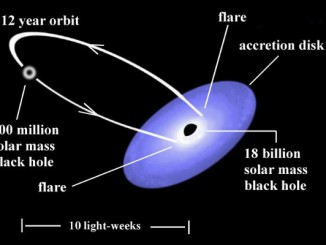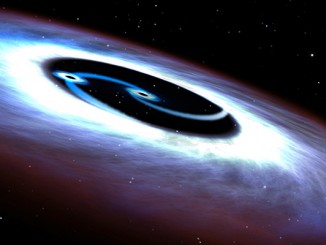
binary black hole



Clocking the rotation rate of a supermassive black hole
A recent observational campaign involving more than two dozen optical telescopes and NASA’s space-based SWIFT X-ray telescope allowed a team of astronomers to measure very accurately the rotational rate of one of the most massive black holes in the universe. The black hole powers a quasar called OJ 287 which lies about 3.5 billion light-years away from Earth.

Hubble finds that nearest quasar is powered by binary black hole
Astronomers using NASA’s Hubble Space Telescope have found that Markarian 231, the nearest galaxy to Earth that hosts a quasar, is powered by two central black holes. The finding suggests that quasars — the brilliant cores of active galaxies — may commonly host two central supermassive black holes that fall into orbit about one another as a result of galactic mergers.
